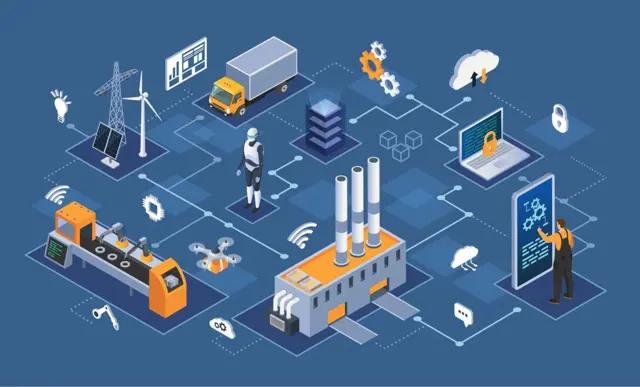The two mistakes about modernizing ERP

The Common Myth with Modernizing ERP
Manufacturing is going through a period of intense change. With tighter margins than ever, global companies are increasingly reliant on good data analytics to run seamless and streamlined operations.
The last two years have brought unprecedented challenges and lasting change to the global manufacturing landscape. There has been significant disruption in terms of business continuity, operational visibility, remote work, employee safety, and more. To tackle these issues manufacturers are turning to digitalization: investing in intelligent solutions that combine sophisticated automation, data analytics and artificial intelligence, and cloud technologies.
Data is the buzz word when making sure that all systems and processes are running as efficiently as possible. However, as many companies are realizing its not just about collecting vast amounts of data. The key is to have proper systems to integrate, manage and interpret that data. And, the expertise to put it to use. With that in mind let’s look at some common myths to see how you can best make use of your data.
True or False: Modernizing your ERP will solve all of your data issues?
Daily, we try automating the collection and distribution of data, since data helps the business make better decisions. And if we hit walls while doing so, modernizing your ERP solves all your data and analytics problems, right? Well… ERP and BI solutions are complementary but very different focus areas. Unfortunately, this assumption still exists nowadays. So, let’s take a step back here and ask ourselves: what really needs to be done to really take your business analytics to the next level?
- 1
Historical data
Historical data is often not taken along: importing all historical data into your new ERP environment makes the new system transactionally cumbersome quite easily. Legacy data is therefore stored in data warehouses or just remains in the old system. Yes, we take on balances, latest open orders and all other current cycles for, let's say, the last two years. However, not a 5-year history of data. So, putting in a new ERP does not guarantee that all data is available.
- 2
Data location
Furthermore, an ERP does not contain all of your data. If you have a manufacturing plant, the ERP keeps the Bill of Materials (BOM) and production orders, but not how the item moved through the production process. Additionally, some data will always be stored in third-party solutions such as logistics systems, e-commerce platforms and training platforms. As a result, data is all over the place, not just in your ERP.
The process of modernizing your ERP
It is easy to see how upgrading an ERP will not allow you to turn off one system and turn on another. If you are a global company that is modernizing your ERP landscape across multiple countries over several years, you will have a multi-application landscape and a transitory timeline for migrating your data. To end up in the new landscape, a transitional architecture is needed. And while you are modernizing your ERP landscape, you can still, and already, deliver value on analytics and reporting by creating a new cloud-based BI architecture, pulling data from various sources, creating advanced dashboards and therefore making information more accessible.
You can, however, choose to keep an ERP system a bit longer when you have one custom built. But when you keep adding subsystems, your master data becomes a hodgepodge, making transitioning extremely difficult. You establish a technological debt by not replacing the ERP. However, if you opt for a new analytics and reporting system, you will create business value by delivering additional insights. The ERP can then be kept running for a little longer while you look for a new transitional architecture or way of working.

Bring ERP and decision support systems together
ERP solutions alone do not provide business insights and Business Analytics software won’t work without the foundations of a good ERP solution. You do require both. An analytics system examines data at many levels: it begins at the top and works its way down, whereas ERP focuses on processes and transactions, providing value upstream.
When you decide to renew your ERP, you may always begin your analytics journey
And when it comes to renewing your ERP, keep analytics and delivering value in mind. While you are making the modifications, look for ways to improve the system and make sure your new ERP is delivering the right transactional data to tie everything together.
ERP solutions focus on supporting your key operational processes while business analytics solutions focus on output. In the end, executives examine their dashboards. Yes, they will occasionally delve into the core system to figure out what went wrong or right. However, they do not look at all of the data and transactions in the core system on a regular basis. Instead, they search for ways to improve processes.
